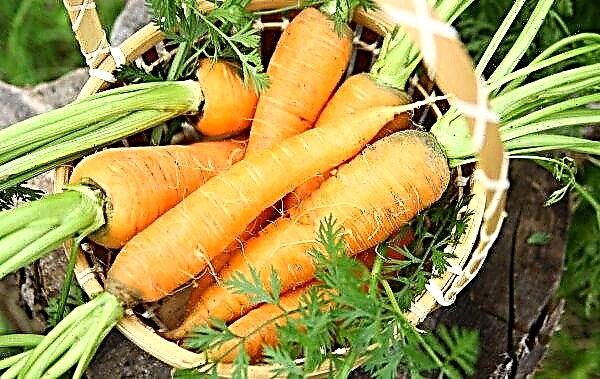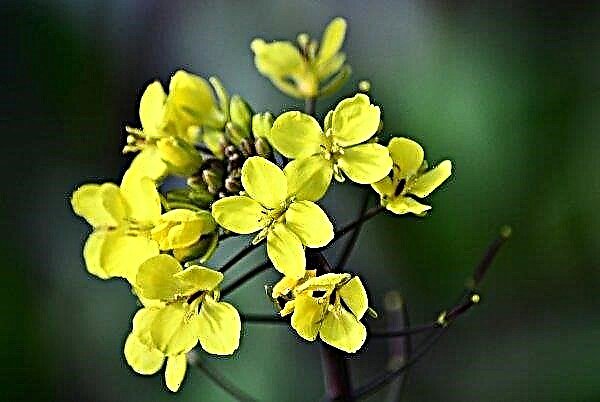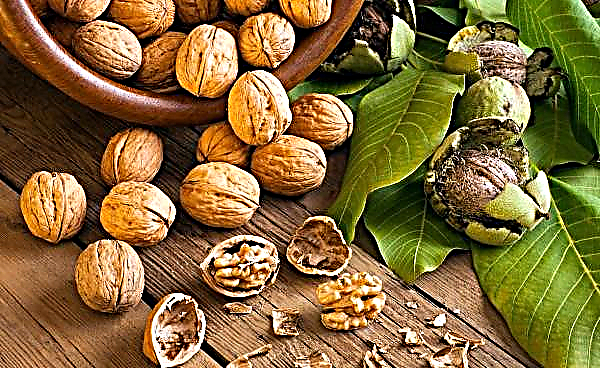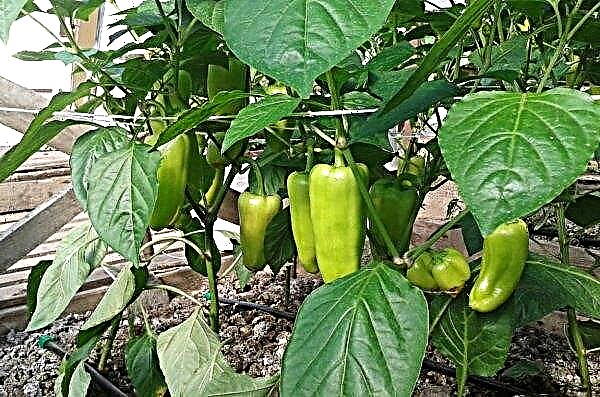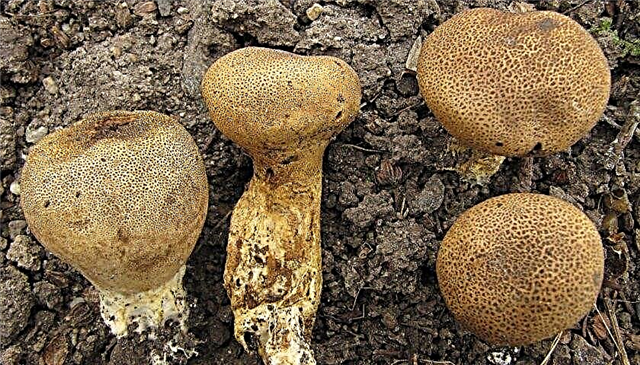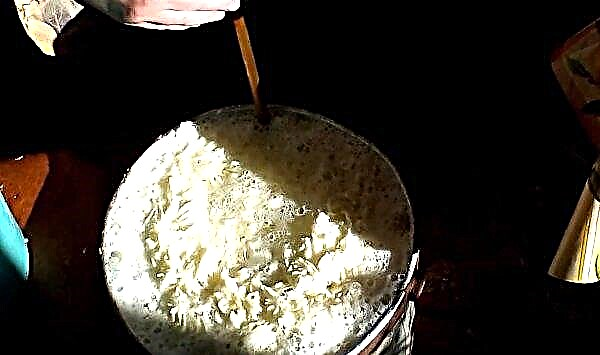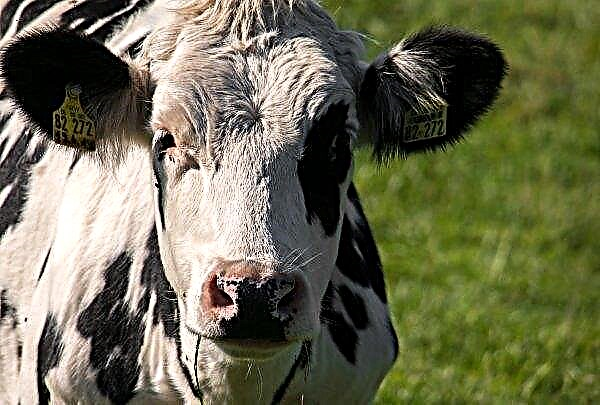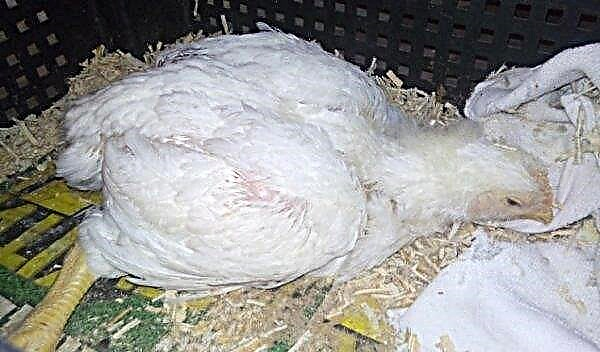Blackcurrant has long won its place in gardens and summer cottages. Culture has secured self-love for its excellent palatability and fruit benefits. The mentioned culture and breeding work are not bypassing, thanks to which many new varieties with improved characteristics are bred, which makes it possible to grow currants in different regions. The relatively young variety Pamyat Vavilova has already managed to gain the trust of many owners of household plots.
Description of blackcurrant variety Memory of Vavilov
Currant variety Vavilov's memory is a culture that adapts well to different climatic conditions. According to gardeners, the plant is not demanding for care on the part of humans, winter well and tolerate dry periods. Particularly pleased with the consistently high fruiting of the bush and the excellent quality of delicious wholesome fruits. The variety can rightfully be called one of the most successful, bred in the post-Soviet space in recent decades.
Selection history
Already from the name it becomes clear that the cultivation of the variety was dedicated to the famous Russian biologist, plant grower Nikolai Ivanovich Vavilov, who was recognized as one of the organizers of agricultural science of the USSR. The new culture was bred at the Institute for Fruit Growing of the National Academy of Sciences of the Republic of Belarus by crossing the varieties Belorusskaya Sweet and Paulinka. Varietal testing was conducted for almost 20 years (from 1978 to 1996), after which the plant was entered in the State Register.
Appearance, characteristics of berries, ripening time, yield
Currant variety The memory of Vavilov is represented by tall bushes (about 2 m in height) with an average sprawling crown. Young shoots are of medium thickness, slightly curved, branched well, old branches have a gray-brown color. In spring, the bushes are covered with five-lobed leaves of medium size with a weak sheen. Sheet platinum is slightly wrinkled, with medium-sized teeth on the edges.
During the bud opening period, the currant is covered with small red flowers, turning the bush into a decorative detail of the landscape. Following flowering, a ripening period begins. Currant fruits Vavilov's memory is a special pride.
Although they are not gigantic in size (average weight of the berry is about 1.2 g), they have a rather pleasant sweet taste. The ripened berries are dark black, rounded, with juicy dense pulp and thin skin with a slight sheen. On a tasting five-point scale, the taste was rated at 4.9 points. The benefits of currant fruits should be noted separately, since many gardeners value the crop for this quality.
The chemical composition of berries includes a complex of vitamins of groups A, B, K, as well as biologically active substances such as:
- volatile - kill viruses and germs;
- pectin - a type of fiber that helps to improve the digestive system and the removal of toxins;
- organic acids - have a prophylactic antimicrobial effect;
- essential oils - have effective bactericidal properties;
- tannins - contribute to the good absorption of food;
- minerals (sodium, calcium, phosphorus, potassium, iron) - improve the cardiovascular system, blood composition, and also strengthen joints.

Vitamin C (ascorbic acid) is especially abundant in fruits, for which currants are considered an excellent antipyretic, anti-cold medicine, which increases immunity and overall body tone.
Did you know? Most vitamin C is found in currant berries, which have just entered the maturity period. By the time of full ripening, 70% of vitamins breaks down.
Currant Vavilov's memory belongs to mid-early cultures. Harvesting begins in the second decade of July and lasts for 3-4 weeks. It is worth considering that the bush begins to bear fruit in the second or third year after planting, so you need to be patient and take care of the plant throughout this entire period. The currant yield is high - from 1 bush you can collect up to 3 kg of berries.
Advantages and disadvantages of the variety
In the scientific description, based on the foundation of long research, the advantages and disadvantages of the variety Pamyat Vavilov are clearly traced. The first, of course, is much larger, for which culture has received great recognition.
- These include:
- high productivity;
- non-shedding of fruit from branches;
- pleasant taste and benefits of berries;
- winter hardiness;
- self-fertility (a plant is capable of pollinating without the participation of other crops);
- suitability for mechanized processing;
- resistance to anthracnose and kidney tick.
- Of the disadvantages, there are only two, namely:
- "Extended" fruiting period;
- susceptibility to lesions by fungal infections.
Agricultural technology
Currant variety The memory of Vavilov cannot be attributed to demanding cultures - it may well develop without special manipulations by humans. Another thing is how long the bush will bear fruit, and how the lack of care will affect susceptibility to viruses and pests.
If you do not want to face diseases and worsening fruiting, you should follow some rules of agricultural technology. First of all, this concerns the rules of planting, and secondly, elementary measures to ensure favorable conditions for growth.
Landing time
The best time for planting currants is considered autumn - the first - second decades of October. At this time, shrubs stop growing shoots and fall into a dormant state. Plants planted during these periods have time to adapt to new conditions before frost, and in the spring they actively build up shoots.
You can plant currants in the spring, but you need to consider that the growing season begins quite early and you need to have time to plant the plant before it begins. It is advisable to carry out work immediately after the snow cover has melted and the soil has slightly warmed up - in late March - early April.
Seat selection and landing
When choosing a place for planting, it is necessary to take into account that for currants, however, as for most shrubs, well-lit areas are preferable. Under the warm rays of the sun, the berries ripen well and various diseases develop less. It is advisable that the site is not subject to drafts and gusty winds (such conditions can lead to brittle shoots and shedding berries).

Currant prefers moist soils, but choosing a site, you need to make sure that groundwater flows no higher than 80 cm from the soil surface, otherwise the root system, located at a depth of 40-50 cm, will suffer from waterlogging.
For planting a shrub, they dig a hole, the diameter and depth of which should be about 40 cm. If there are conditions for stagnation of water, it is better to line the bottom of the pit with a drainage layer of crushed stone. The seat must be fertilized - this will help the young plant to take root quickly and save on fertilizing for at least 1 year. As a fertilizer, some part of the soil (1-2 shovels) should be mixed with 5-6 kg of compost, 100 g of superphosphate and 30 g of wood ash. The mixture is poured into the bottom of the landing pit.Important! You can not plant currants in swampy and shaded places — such an environment has a beneficial effect on the development of fungal diseases.
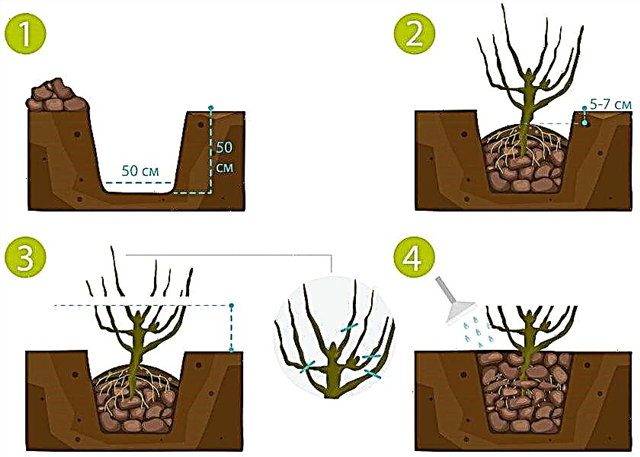
A seedling is placed in the prepared fertilized hole, watered with five liters of water, covered with soil and watered again. At the final stage, the soil is mulched using peat, sand, sawdust. When forming the holes, it should be noted that the plant should be located at a distance of at least 1.5 m from neighboring plantings (trees, bushes).
Care
Compliance with the simple rules for the care of currants will protect the culture from diseases, ensure adequate development and productivity. The main procedures include the following:
- Watering. Since the currant root system reaches a depth of 30–40 cm, this is how the soil should be moistened. After planting, the culture requires special attention - the bushes need to be watered 2 times a week, delivering 8-10 liters of water for each plant - this will help currants to take root and be fed more quickly. Further watering can be reduced or completely suspended if enough rain falls. During periods of summer drought, watering resumes, delivering 10-15 liters of water under each shrub 2-3 times a week. Watering plants need early in the morning or in the evening. Mulching helps to retain moisture in the soil - sprinkle the trunk circle with sawdust, peat, compost or sand.

- Loosening. This is one of the necessary measures to ensure full circulation of air in the root system and uniform hydration. It must be taken into account that currant roots are located quite high to the soil surface, at a depth of up to 30 cm, so the soil is loosened very carefully. Currant roots spread horizontally in the soil, flooding the territory within a radius of 2–2.5 m - it is at this distance from the trunk of the shrub that loosening should be carried out. The procedure at the same time helps to get rid of weeds that are collected from the beds and burned.
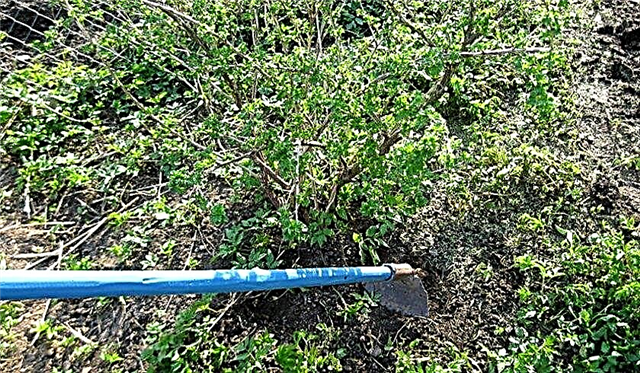
- Top dressing. Two main top dressings are made to currant bushes in spring and summer. In the spring, they are needed so that the currant "wakes up" and sets out to grow. For this, top dressing is used in the form of nitrogen-containing compounds, for example, a urea solution, which is prepared from the calculation: 50 g of the product per 10 liters of water (per 1 bush). In autumn, you need to fertilize the currants with organics - 3-4 kg of manure (compost) is added and dug under each bush. Return to the plant vitality after fruiting will help such compounds as sour potassium (20 g per 1 bush) and superphosphate (50 g per 1 bush). Using complex mineral fertilizers, foliar application is carried out several times during the season: before swelling of the buds, after flowering, and before fruiting.
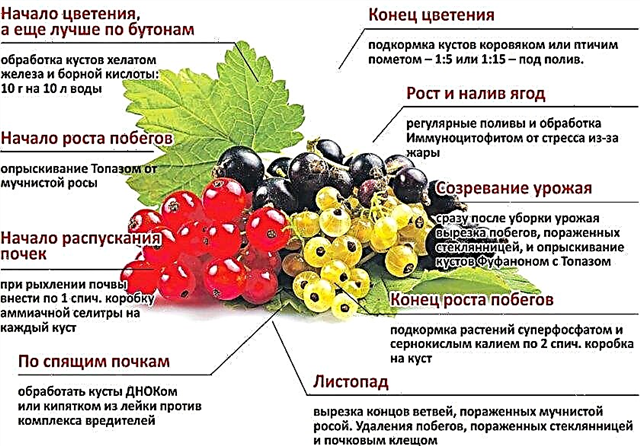
Pest and Disease Control
Variety Memory of Vavilov is characterized by resistance to anthracnose, but there are other diseases that can harm the plant. Some of them are carried by wind, rains, insects, and others are the result of non-compliance with the rules of agricultural technology. Density of shrubs, waterlogging of the soil, lack of top dressing - all these factors significantly weaken the culture, provoking ailments. Bushes need to be inspected more often. Having discovered the changes, immediately proceed to treatment.
Did you know? Fungal spores cannot develop without moisture, so this kind of disease does not progress in dry weather. The most favorable conditions for the development of infections are heat in combination with high humidity.
The greatest danger is represented by such diseases as:
Of the insect pests seeking to enjoy the juice of shrubs, spider mites and bud mites, glass-boxes, aphids and ants do great harm. They struggle with their appearance by spraying bushes and soil beneath them with insecticides such as Inta-Vir, Fufanon, and Aktellik. 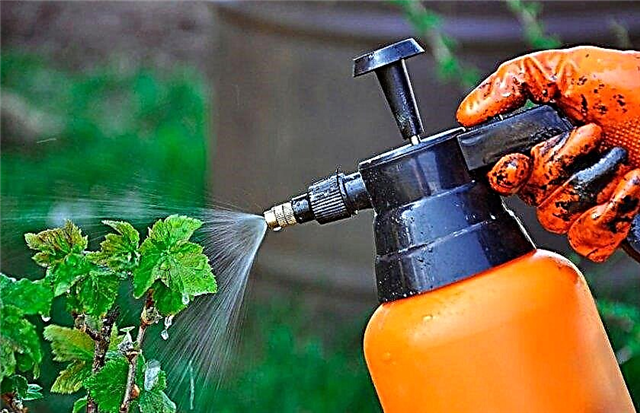
As a preventative measure, the bushes are periodically sprayed, eliminating the possibility of developing diseases or insect attacks. In early spring, currants are irrigated with a 1% solution of Bordeaux liquid or copper sulphate. For a greater effect, it is worth processing not only the shrub, but also the soil around it. In the fall, spraying must be repeated.
Trimming and shaping a bush
Shrubs are formed throughout the season - they are thinned out, damaged, infected branches are removed, as well as those that form a thickening, directing their growth in the middle. During the season, you need to carry out two more main trimmings - in spring and autumn.
In early spring, before the buds begin to swell, you need to remove badly overwintered shoots - broken, frozen, overgrown with moss. This is a kind of preventive pruning. It is advisable to shorten the branches of the second order, the length of which exceeds 50 cm. Fig. 1. Currant pruning: a - annual seedling; b - a biennial bush; c, d - shortening of shoots. Fig. 2. Currant bush before anti-aging pruning (a), after it (b) and pruning of a neglected bush (c).
Fig. 1. Currant pruning: a - annual seedling; b - a biennial bush; c, d - shortening of shoots. Fig. 2. Currant bush before anti-aging pruning (a), after it (b) and pruning of a neglected bush (c).In the fall, the second scheduled pruning is carried out. Sick, damaged stems, blackened branches older than 5 years old, shoots without branching, as well as young basal shoots are cut from the bushes. It is necessary to cut off the branches growing in the center of the bush, which will provoke thickening. Such pruning will create the correct development of culture in the springtime.
Wintering
Shortly after harvesting, the currant enters a dormant state, preparing for wintering. The task of gardeners is to help the plant safely overwinter, not freeze and not get sick. The preparatory process begins, tentatively, in mid-October. First, shrubs cut and remove the remaining leaves from the branches. Weed and dig the territory with the simultaneous application of fertilizers. Digging will help get rid of pests and their larvae wintering in the ground.
Bushes are treated with pests and diseases. For a safe wintering, plants need moisture - if there is little natural rainfall, you need to carry out water-charging irrigation, spending up to 20 liters of water for each bush. After watering, the soil must be mulched - such a protective layer will help maintain moisture and warm the roots of currant in severe frosts. The old (summer) mulch must be removed, as pests can winter in it.Important! After cutting bushes and weeding, it is imperative to eliminate all biological debris (clippings, fallen leaves, fragments of weed grass). Leaving it on the site, there is a risk that it will become a favorable location for fungal infections and pests in the winter.

Blackcurrant has a high resistance to frost. This also applies to the variety Pamyat Vavilov, whose bushes are able to withstand cooling to -30 ... -35 ° C, provided that the branches are in the snow. In autumn, the steles remaining after trimming should be bent to the ground and fixed so that the height of the upper points of the arcs does not exceed 40 cm. Given that winters are not snowy, it is better to build shelters for bushes using spruce spruce branches, burlap or spanbond.
Harvesting and transportation
The process of ripening near the currant Vavilov's memory is quite long, so the crop is harvested in several passes. If the bush is planted in the “right” place, where there are no gusts of wind, the berries themselves do not crumble, even when they are in a poured, ripe state, which makes it possible to harvest without loss.
It is better to collect currants in dry weather, as wet berries are worse preserved. It is advisable to stack the fruits in a low container with wide edges. Store fresh currants in a cool place (refrigerator, cellar) for about two weeks. If the harvest is supposed to be transported, it is better to collect slightly unripe fruits - during the transportation time, which should not exceed 5-7 days, the berries will ripen.
To preserve healthy fruits for a long time, they can be frozen by packing in a plastic bag. Currants can also be dried in the oven or in the sun, and you can also cook delicious jam, jam or compote from it.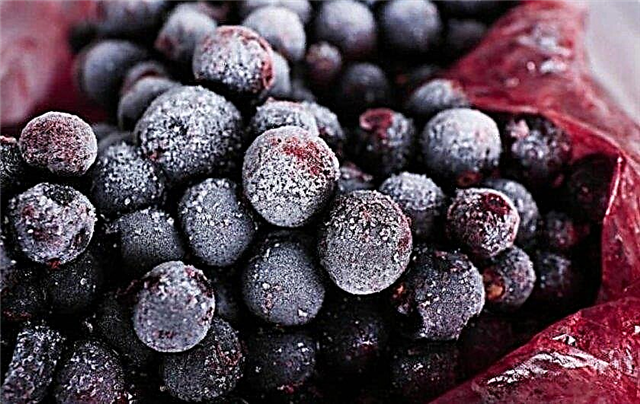
Blackcurrant variety The memory of Vavilov is highly appreciated both for the ability to adapt well to different climatic conditions and for the excellent taste of fruits. Having planted it on your site, do not forget about observing elementary agrotechnical rules and the culture will delight you with good productivity for many years.





